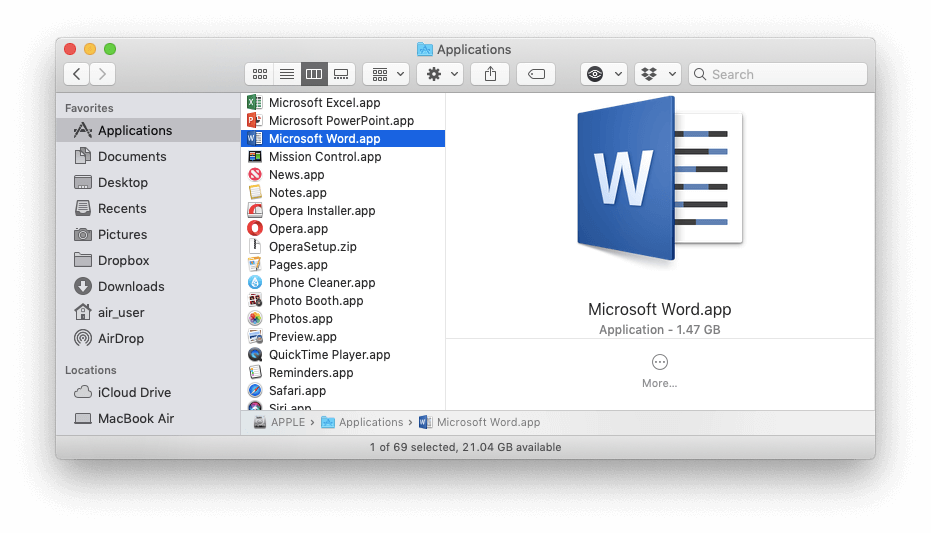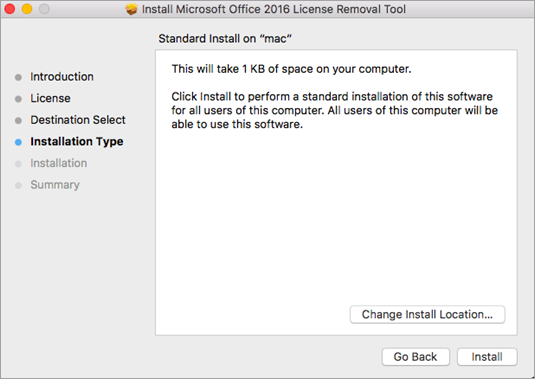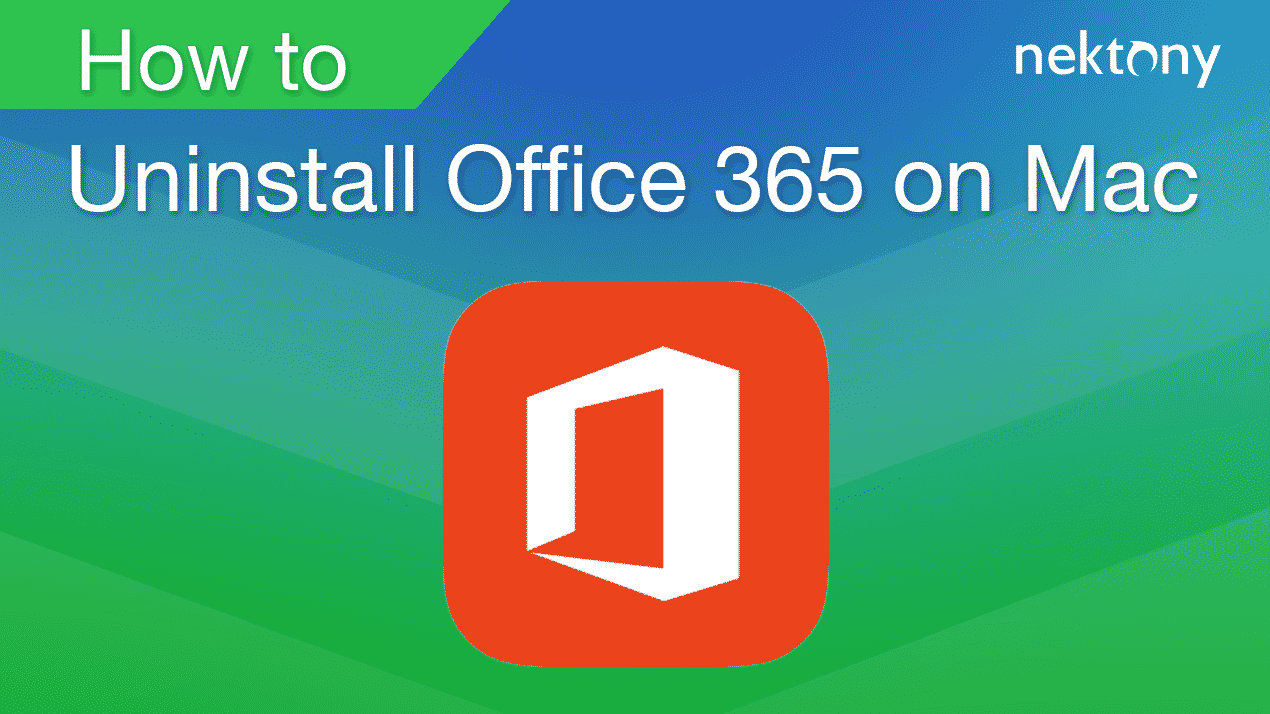Office 365: Uninstalling Office and Deactivating Licenses. Last updated Tuesday, Feb. 25, 2020, at 1:47 p.m. If you decide to discontinue the use of one of your devices, get a new one, or decide you no longer want Microsoft Office installed, you can uninstall the applications and make available one of your free licenses to use on another device. Deactivating an installation doesn't remove Office for Mac from the computer. Instead, the installation goes into reduced functionality mode. Users can sign into the Office 365 portal to deactivate an existing installation by going to My account Install status Manage installs. Or, you can deactivate an installation as an Office 365.
Remove Office 2016 for Mac applications


Uninstall Office 365 on Mac automatically All programs differ from one another in the way that service files are created and stored on the computer. The differences are due to the user’s experience, the macOS version, the particular app version, and so on. Microsoft provides an easy fix tool to help you quickly uninstall Office 365, Office 2016 or 2013 completely from your computer. To use the “Microsoft Support and Recovery Assistant” tool to remove the suite of apps from your device, use these steps: Download Microsoft Support and Recovery Assistant tool. This tool can also help if you've subscribed to Office 365 and previously had the one-time purchase of Office 2016 for Mac on your computer, and aren't seeing subscription features like Focus Mode in Word, Morph transition in PowerPoint, or O365 Groups in Outlook because your copy of Office is still using the license of your one-time purchase and not your subscription.
- Open Finder and click Applications.
- Command +click to select all of the Office 2016 for Mac applications.
- Ctrl+click or right-click the applications you selected and click Move to Trash.
Remove files from your user Library folder

To remove files from your user Library folder, you'll need to first set the Finder View options.

- In Finder, press +Shift+h.
- On the Finder menu, click View > as List, and then click View > Show View Options.
- In the View Options dialog box, select Show Library Folder.
- Switch back to Column view (+3) and click <YourUserName>Library > Containers and ctrl+click or right-click each of these folders if present, and then click Move to Trash.
- com.microsoft.errorreporting
- com.microsoft.Excel
- com.microsoft.netlib.shipassertprocess
- com.microsoft.Office365ServiceV2
- com.microsoft.Outlook
- com.microsoft.Powerpoint
- com.microsoft.RMS-XPCService
- com.microsoft.Word
- com.microsoft.onenote.mac
- Switch back to Column view (+3) and click <YourUserName>Library > Group Containers and ctrl+click or right-click each of these folders if present, and then click Move to Trash.
- UBF8T346G9.ms
- UBF8T346G9.Office
- UBF8T346G9.OfficeOsfWebHost
Oct 2, 2015 10:08 AM
-->Office 365 License Removal Tool For Mac
Applies to:Office for Mac, Office 2019 for Mac
To use Office for Mac in your organization, it needs to be activated. How you activate Office for Mac depends on whether your organization has an Office 365 (or Microsoft 365) plan or has a volume license agreement. But in both cases your users won't have to enter any product keys.
Note
If you're an Office user trying to activate a personal copy of Office for Mac, follow these instructions instead of reading this article.
Activate Office 365 versions of Office for Mac
Office 365 Removal Tool For Mac Osx
If your organization has an Office 365 (or Microsoft 365) plan, make sure you assign each user a license for Office before you deploy Office for Mac to your users. If you don't assign a user a license, you can still deploy Office for Mac to that user, but the user won't be able to activate and use Office.
For Office 365 (and Microsoft 365) customers, Office for Mac activates by contacting the Office Licensing Service on the internet. The Office Licensing Service keeps track of which users are licensed and how many computers they've installed Office on.
After you deploy Office for Mac, your users are prompted to activate Office the first time they use it. Make sure users are connected to the internet when they activate Office.
On the Sign in to Activate Office screen, users should select Sign In, and then enter their email address and password. After they sign in, users may see an alert asking for permission to access the Microsoft identity stored in their keychain. They should select Allow or Always Allow to continue.
While you can deploy Office for Mac for your users, your users need to sign in and activate Office for Mac for themselves. That's to ensure that the Office Licensing Service properly associates Office for Mac with the correct licensed user.
A program on the Mac, the Office365ServiceV2 daemon, runs once a day to check the user's subscription status. The computer must be connected to the internet to contact the Office Licensing Service. If the computer can't contact the Office Licensing Service after nine days, the user sees a warning message when working in an app.
If the computer can't contact the Office Licensing Service after 30 days, Office goes into reduced functionality mode. This means that the user can open, view, and print existing documents in an Office app, but can't create or edit documents. The user also sees a message in the app that most features aren't available. After the user connects to the internet and the subscription status is verified, all the features of Office are available again.
For each user that you've assigned a license to, you can deploy and activate Office for Mac on up to five Macs for the user. If you need to provide Office for Mac on a sixth computer for a user, you need to deactivate an existing installation first. Deactivating an installation doesn't remove Office for Mac from the computer. Instead, the installation goes into reduced functionality mode.
Users can sign into the Office 365 portal to deactivate an existing installation by going to My account > Install status > Manage installs. Or, you can deactivate an installation as an Office 365 administrator. Sign into the Office 365 portal, go to the admin center, and then go to Users > Active Users. Select the user, and then choose Edit for the Office installs property of the user.
Activate volume licensed versions of Office for Mac
To activate a volume licensed version of Office 2019 for Mac, use the Volume License (VL) Serializer. You can download the VL Serializer by signing into the Volume Licensing Service Center (VLSC). You run the VL Serializer on each computer. By doing this, your users won't see any activation prompts when they first open Office 2019 for Mac.
For more information, see Overview of the Volume License (VL) Serializer.
Related articles
